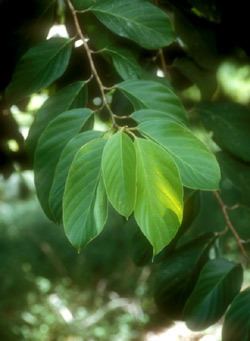Family Icacinaceae | Order (unplaced) Rank Species | |
 | ||
Genus PoraqueibaAublet, 1775 Similar Amazon Grape, Quararibea cordata, Couepia, Icacinaceae, Theobroma bicolor | ||
Poraqueiba sericea, the umari, guacure, yure or teechi, is a plant native to the Amazon, distributed both wild in natural forest and cultivated in Brazil, Colombia, Ecuador and Peru, in non-flooded wetlands, between 23° and 25 °C. and up to 500 m.
Contents
Description
It is a tree of up to 40m height and 1m in diameter. Cultivated reaches 7–14 m tall and 28–35 cm in diameter. Its leaves are 21 cm long by 11 cm wide. The fruit is an obovoid drupe of 5 to 10 cm in length and 4 to 8 cm in diameter. It has thin, smooth, shiny, yellow, black, red or green peel. The mesocarp is edible and 2–5 mm thick and of fatty butter-like texture, yellow color and pleasant taste. It contains fat, carbohydrates, protein, zinc, calcium and vitamin A. The endocarp is hard, woody, containing a large seed with abundant endosperm.
Distribution and habitat
It propagates by sowing the endocarp containing the seed in bags and is then transplanted. It can be planted in the shades associated with other crops. Germination occurs from 38 days after planting, fruiting at 3 years and at 5 years it is at full production. It is harvested from the ground the same day the fruit falls.
